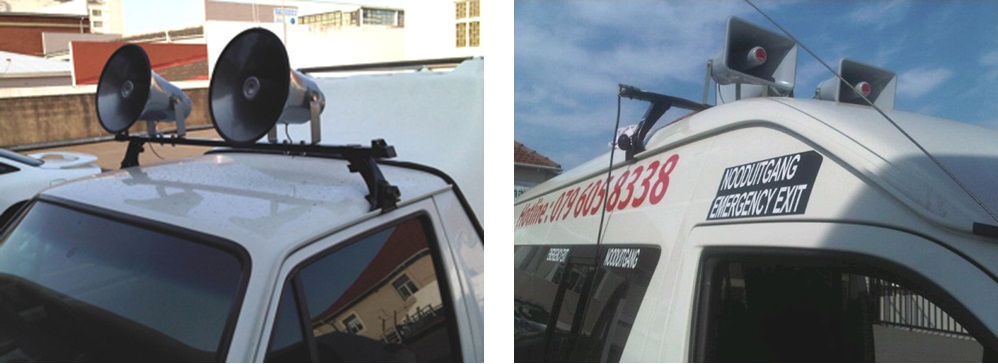Radio, TV, Film and Video
This item is concerned with what generally falls under the description “broadcasting”.
A more descriptive phrase is “one‐to‐many” communication. The model form is the mass circulation newspaper, developed in the last quarter of the 19 th Century. Cinema as a mass medium followed at the beginning of the 20 th Century. Radio broadcasting got under way in the 1920s. Television took off as a mass medium in the 1950s.
Mass, one‐to‐many, broadcast communication is therefore typical of the 20 th century. All of these media have been used by states to impose uniformity of thought and culture on the population. They have all been used by revolutionaries, as well. But typically, one‐to‐many communication is patronising and not conducive to revolutionary thought, which as we know requires dialogue if it is to develop.
Only with the rise of the Internet, with its possibility of “many‐to‐many”, or “any‐to‐many” communications, has the broadcasting model been challenged. It has meant that means of production and distribution of cultural artefacts on a mass scale are now in the hands of individuals.
Consequently, all of the media of broadcast communications, newspapers, cinema, radio and television are in crisis. All have declined to a fraction of what they used to be at their peak, and they are continuing to decline.
What has replaced them is not yet a new communism of communications, although there have been periods when something like a free‐for‐all has appeared to exist in communications, in what we now call ICT (Information and Communication Technology).
In practice the Internet, and the World Wide Web which is the protocol that we use on the Internet, has been exploited by the bourgeois State as much as, or more than, it has been by revolutionaries. The possibility of frictionless communication does not in practice mean that production is being done by everybody. On the contrary, the situation has exposed the reality that communications is always a labour‐intensive business. The ones who dominate in communications are those who can mobilise the largest and best‐co‐ordinated body of individuals who can be put to work on production. Capital can do this if it wishes.
Therefore what comes about is in effect an Agitprop war, where those with the most consistent and the best output will prevail. The revolutionaries, with potentially millions of well‐motivated volunteers should be able to win. But in fact it is usually the money‐bags capitalists who win, because they can hire people quickly to get ahead.
What the revolutionaries need in the first place are people who are capable of working the means of communication, technically, artistically and ideologically.
At the same time, the revolutionaries need to avoid mimicking the communication strategy of the bourgeoisie, while stealing from it at the tactical level.
The bourgeois strategy is to return as soon as possible to the condition of “broadcasting”, whereby the fountain of national culture is effectively in their hands. The fullest development of
this model is the British Broadcasting Corporation, of which the ABC is intended to be a copy.
The ABC is supposed to set the tone of the nation by centralised and country‐wide communication. The fact that the ABC is in a constant state of collapse, and the resultant furore that has continued for many years past, reveals that the bourgeoisie and the middle classes badly want a way to communicate with the masses, on their own (bourgeois) terms.
The revolutionary model, on the other hand, is the Freirean model of dialogue. Therefore, film and video are not good forms of propaganda for revolutionary purposes. Video locks people away from one another, with each being held within a private channel of connection with the screen. It is extremely difficult to generate a discussion of quality from that starting point, if not impossible. Meetings that begin with the showing of videos seldom take off.
A revolutionary communication is a two‐way communication. Revolutionaries must produce, as well as consume, political culture. This is the theoretical basis of the Agitprop. Agitprop is not an add‐on to political theory. It is in itself an indispensable part of political theory.
Loudspeakers

A form of broadcasting that is used at local level is the loudhailer on a car, as illustrated above.
Loud-hailing
Rarely used here but loud‐hailing can be very effective if it is done properly. Either use a hand‐held loud‐hailer or one mounted on top of a car if local noise laws permit. It is not a good idea to use this method in the suburbs! The person using the hailer should be trained and clear about what to say. Some people like to become pop stars or clowns when they have a loud‐hailer and they can waste our resources and irritate listeners.
Here are some tips:
• Speak slowly and clearly
• Write a script for what must be said and stick to it
• Drive slowly and responsibly, don’t use flashy cars, put posters on sides of car.
• Do not hang out of windows
• Never shout as you will not be heard
• Do not make comments at passers‐by – especially women.
Exhibitions

Exhibitions are a means of mass communication that revolutionaries can use at festivals and at specialist events that the revolutionaries take part in.
The basic unit of an exhibition is a modular piece of floor space that the exhibitor can hire, and erect on it a “stand”. The stands can vary quite a lot, but the one illustrated above is quite typical.
You could have a place where a person could sit and welcome the people, and provide information about the matter being exhibited. Around the stand can be display panels and fixed exhibits. Make sure you have a good supply of business cards and most likely leaflets and pamphlets.
Sometimes stands take the form of small meeting rooms, with chairs and a round table, where business can be discussed.
Exhibition stands need carpenters and painters and a lot of good planning.